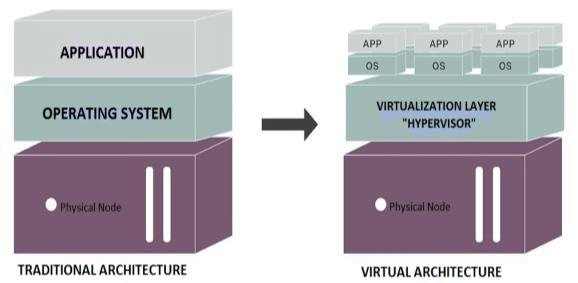Traditional vs Hyper-Converged Architecture
When you are planning to build your data center, a question arises which says; should you go with Traditional Infrastructure or Hyper-Converged Infrastructure?
To be honest, your environmental requirement should be the driving factor over here for your preferred architecture. If a more unique virtualization platform is required, then you would want to choose every single component by yourself like choosing the network hardware, storage hardware, customizing your servers, etc., and for some customers, there is no need for customizations and a generic virtualization platform is more than enough.
Traditional Server Architecture
Traditional architecture provides you the flexibility of choosing every single component for each category. Having said that traditional architecture build requires thorough planning and evaluation of cost vs. benefits. You would be required to evaluate and decide for every single category like servers, storage arrays, network components like choosing the adapter cards and even the type of cables to be used for connectivity.

Although traditional architecture provides the flexibility of choosing the best components of each category, it eventually creates a siloed environment, which will limit the visibility across several departments, and eventually slow down the provisioning and collaboration among different teams.
Hyper-Converged Architecture
Hyper-Converged Architecture is OEM’s glorified pre-packaged certified solutions. It basically comprises several Hyper-Converged nodes which provide the computational capabilities and storage. With the HCI solution, you can simply scale out by just adding more Hyper-Converged nodes to your cluster. HCI solutions use vSAN to abstract the Direct Attached Storage (DAS) connected to each server and present it as a logical pool of storage.
Hyper-Converged solutions focus more on scale-out architecture rather than scale-up. If there is a resource crunch in the environment, then all you need to do is add another node in the cluster.
Few global leaders worth noting in the HCI market are Dell EMC VxRail, Cisco HyperFlex, HPE Simplivity, Nutanix.
Advantages of Hyper-Converged Infrastructure
- Easy deployments: HCI solutions are easy to build and takes less time in setting up compared to traditional infrastructure planning, designing, and implementation.
- Simplified growth: HCI solutions are focused on a scale-out model where all you need to do is add a new physical server to your cluster and it adds the storage capacity of the new node to the cluster.
- Single window for support: Since HCI solutions are sold by OEM as one pre-packaged solution, you do not have to go to different OEMs for storage, network, and compute. All you get is single window support from one OEM for all the components.
- Lower CAPEX: The entry-level cost of the HCI solution is pretty much lower than that of traditional architecture. For most of the solutions, all you need is at least three physical servers to get you started.
Disadvantages of Hyper-Converged Infrastructure
- Limited options: HCI nodes are usually dual-socket servers. If you have a requirement for larger servers then you might want to give it a second thought.
- Storage constraint: The storage in the HCI platform is shared among the virtualized nodes of the same cluster, if you have a requirement to add a new physical server outside the cluster then the new server won’t be able to use the shared cluster. You might want to buy separate storage for the new server.
- Staff experience: In traditional environments, there are separate teams for every technology. Upgrading to an HCI environment gives you all the components in one place and would require an experienced engineer to deploy and manage the HCI appliance.
- Limited scaling: Storage replication is done among different nodes of the same cluster for high availability of data. Replication can be affected by network bandwidth between the servers in large clusters. To mitigate that every OEM has a specified maximum number of nodes that can be added to an HCI cluster.
It all depends on your environmental requirements. If you do not have unusual requirements, then Hyper-Converged is the way to go, and here are a few things which you should consider when modernizing your data center from traditional to HCI. But if you want to choose every single component by yourself to better suit your need then going with traditional architecture will be a smarter choice.
If you’re still contemplating the fact if you should go for Hyper-Converged or Traditional Infrastructure, we, here at Zindagi Technologies have a team of skilled Solution Architects and certified implementation engineers who can help you plan your deployment better. If you’re looking for Planning / Designing / Implementation / POC then reach us at [email protected] or give us a call at +919773973971.
Author
Sumit Yadav
Data Center Consulting Engineer
